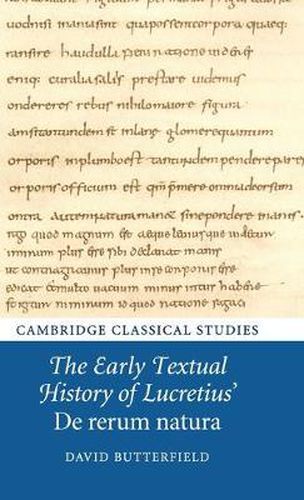Readings Newsletter
Become a Readings Member to make your shopping experience even easier.
Sign in or sign up for free!
You’re not far away from qualifying for FREE standard shipping within Australia
You’ve qualified for FREE standard shipping within Australia
The cart is loading…






This is the first detailed analysis of the fate of Lucretius’ De rerum natura from its composition in the 50s BC to the creation of our earliest extant manuscripts during the Carolingian Age. Close investigation of the knowledge of Lucretius’ poem among writers throughout the Roman and medieval world allows fresh insight into the work’s readership and reception, and a clear assessment of the indirect tradition’s value for editing the poem. The first extended analysis of the 170+ subject headings (capitula) that intersperse the text reveals the close engagement of its Roman readers. A fresh inspection and assignation of marginal hands in the poem’s most important manuscript (the Oblongus) provides new evidence about the work of Carolingian correctors and offers the basis for a new Lucretian stemma codicum. Further clarification of the interrelationship of Lucretius’ Renaissance manuscripts gives additional evidence of the poem’s reception and circulation in fifteenth-century Italy.
$9.00 standard shipping within Australia
FREE standard shipping within Australia for orders over $100.00
Express & International shipping calculated at checkout
This is the first detailed analysis of the fate of Lucretius’ De rerum natura from its composition in the 50s BC to the creation of our earliest extant manuscripts during the Carolingian Age. Close investigation of the knowledge of Lucretius’ poem among writers throughout the Roman and medieval world allows fresh insight into the work’s readership and reception, and a clear assessment of the indirect tradition’s value for editing the poem. The first extended analysis of the 170+ subject headings (capitula) that intersperse the text reveals the close engagement of its Roman readers. A fresh inspection and assignation of marginal hands in the poem’s most important manuscript (the Oblongus) provides new evidence about the work of Carolingian correctors and offers the basis for a new Lucretian stemma codicum. Further clarification of the interrelationship of Lucretius’ Renaissance manuscripts gives additional evidence of the poem’s reception and circulation in fifteenth-century Italy.